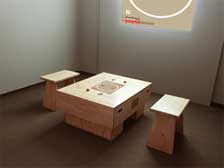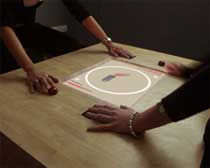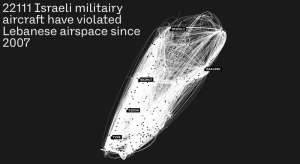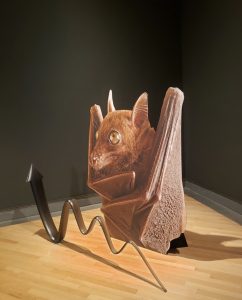Virtual Sumo is inspired by sumo, the Japanese sport in which two contestants try to force their adversary outside the competition area or make him touch the rug. The attack in preceded by a fase of mutual observation (shikiri) in which the fighters use eye contact, study and strategic ploys to make their opponent lose concentration. In this phase it seems that even slight changes on the exposed areas of the contestants’ skin would allow both opponent and audience to judge the state of fighter’s emotions.


In the Virtual Sumo installation two fighters, seated at a table with a monitor set so that they are obliged to assume a position similar to that used in sumo, rest their left hands on a sensor that records the state of their emotions (heartbeat and surface perspiration). On the monitor the competition area can be seen, a circle in which two game pieces represent the two contestants; their emotional state is also visualized, moment by moment. The contestants can thus check on the screen their own and the other’s state of concentration and, given the proximity of their face to that of their opponent, can use disturbing stategies. The more emotionally neutral their state of mind is, the more their (virtual) energy grows. When they think the moment has come, by pressing a button with their right hand they launch the attack: The piece that represents them flings itself at the opponent’s piece tryng to throw it out of the circle. On the wall above the two contestants a large screen will dramatically reveal the alternation of the two fighters’ emotional responses.
By Mario Canali, Yaniv Steiner, Massimo Banzi, Gabriele Gotini, Leonardo Aurelio, Massimiliano Cavigioli, William Giroldini and Studio Canali S.r.
Similar games of relaxation: BrainBall, Wave UFO, Relax to win, InnerForce, and Wild Divine.







